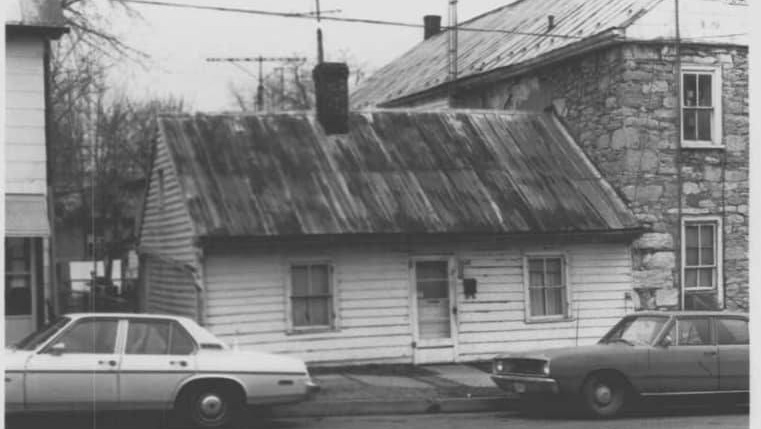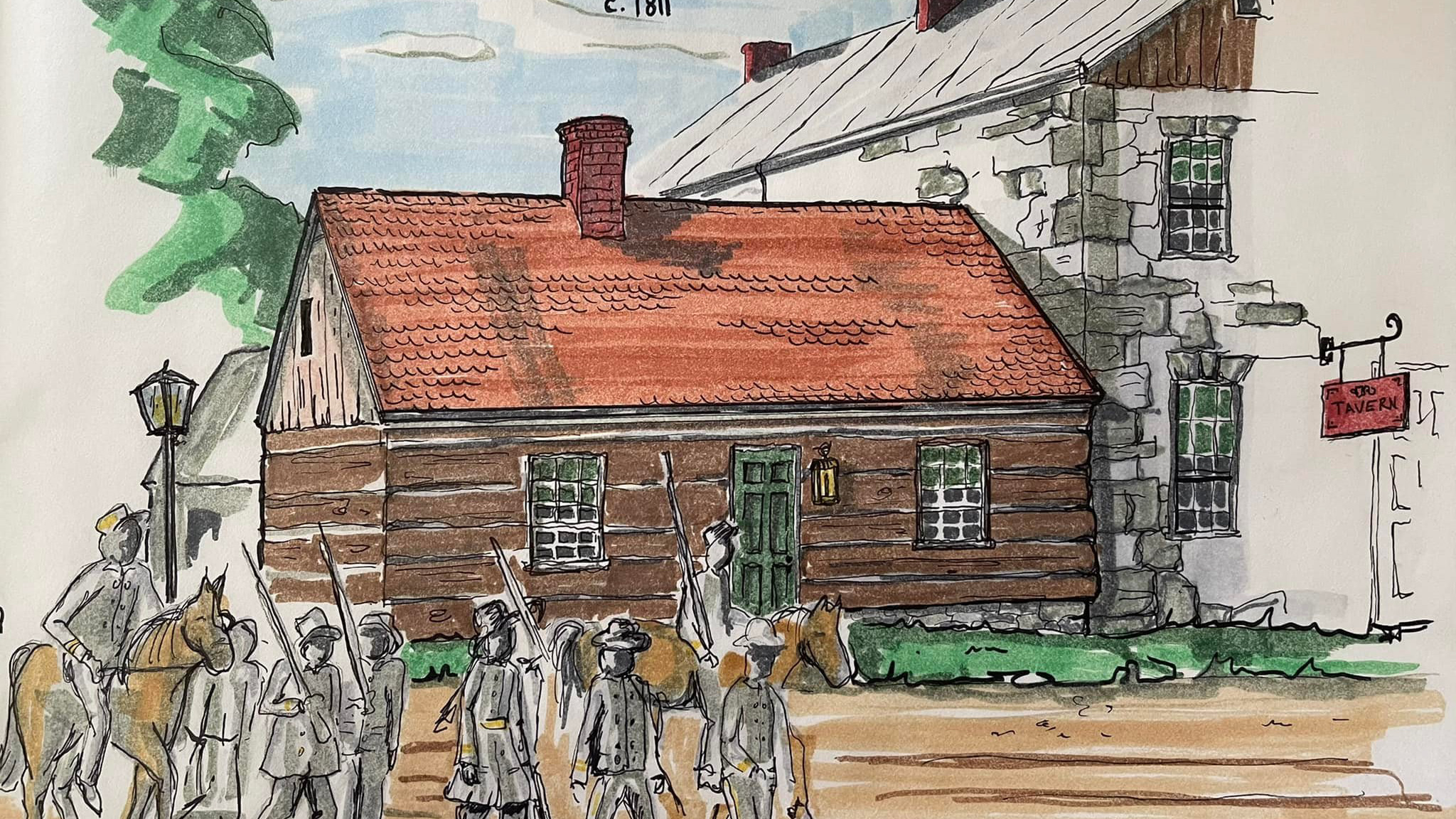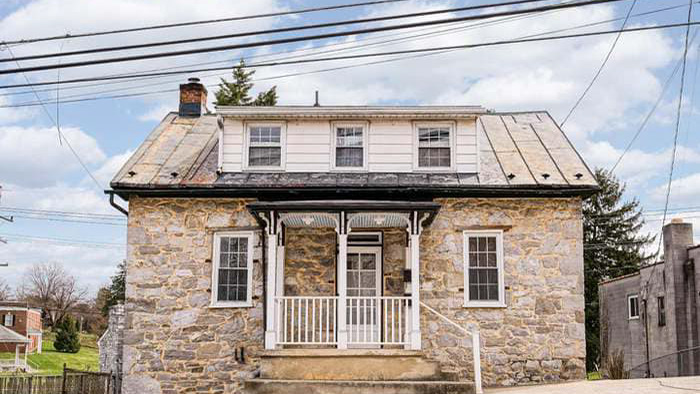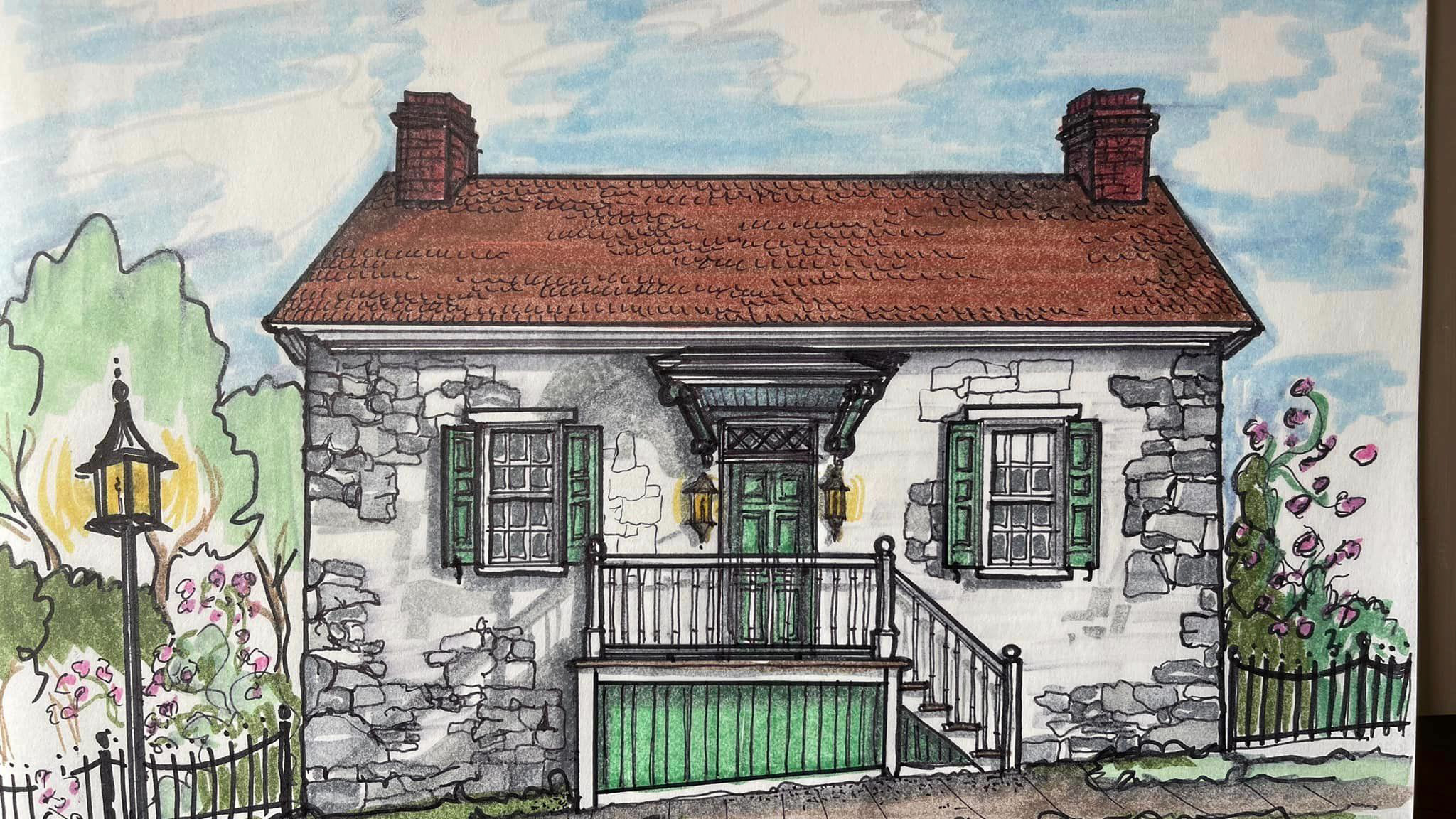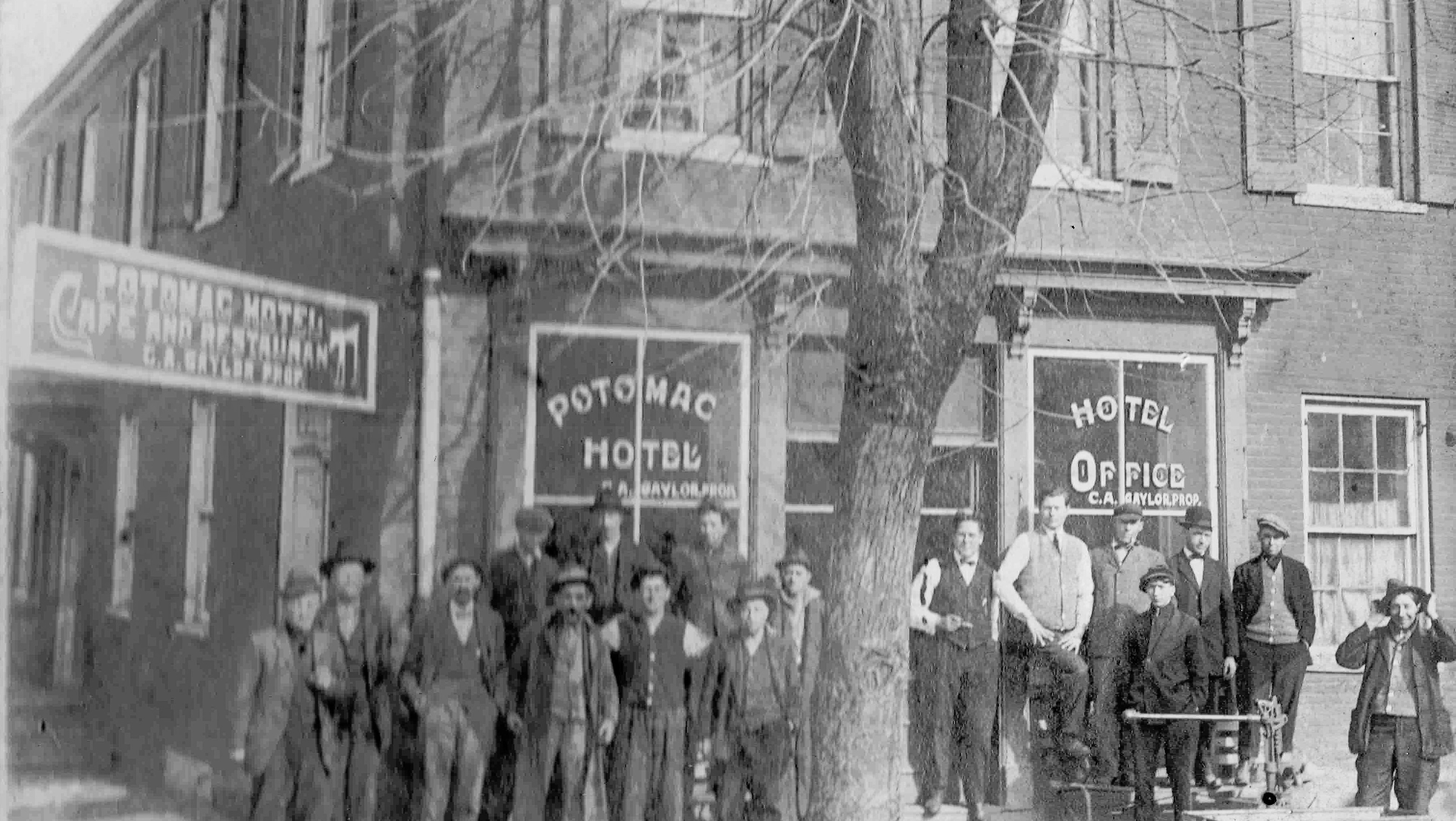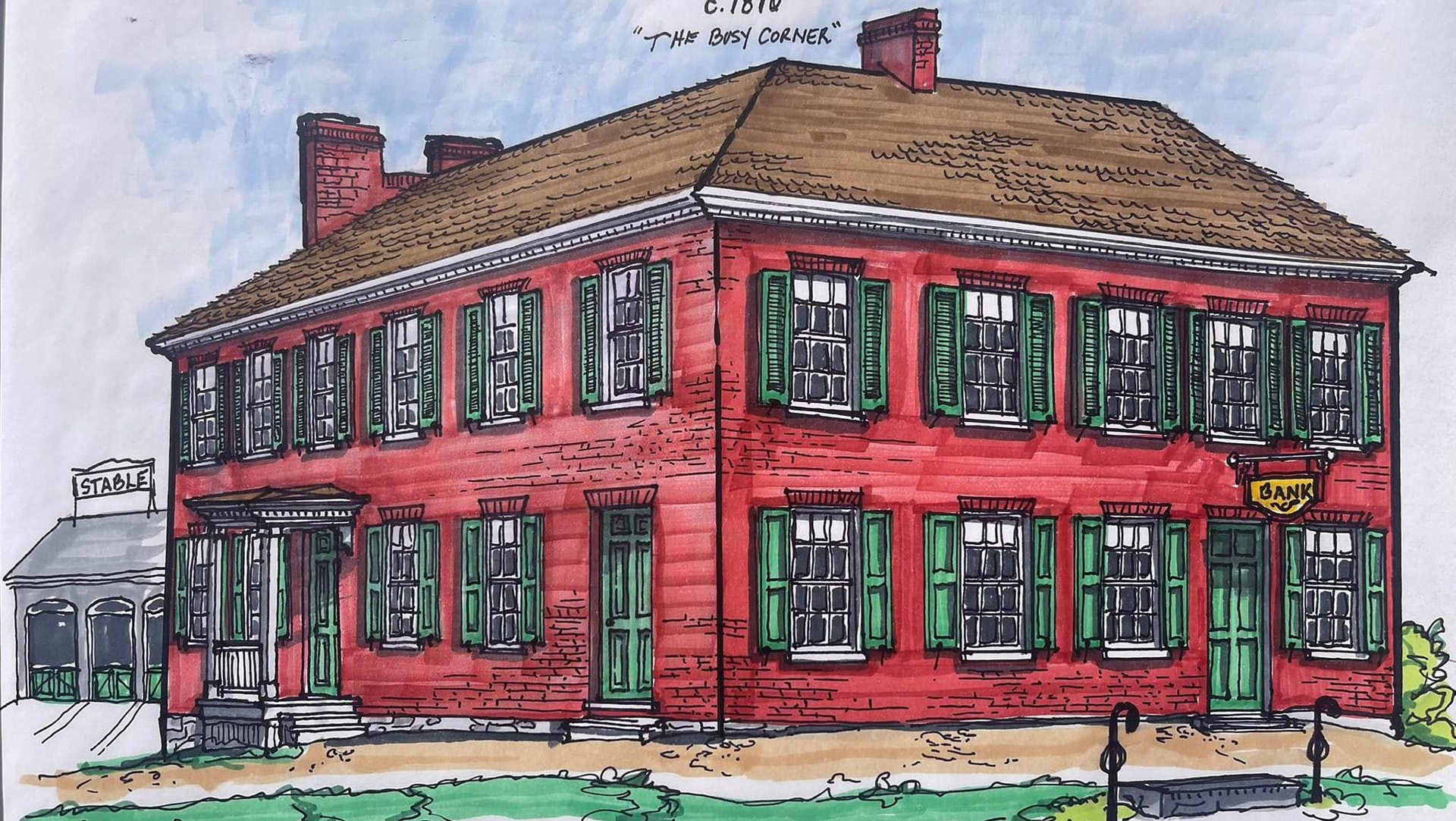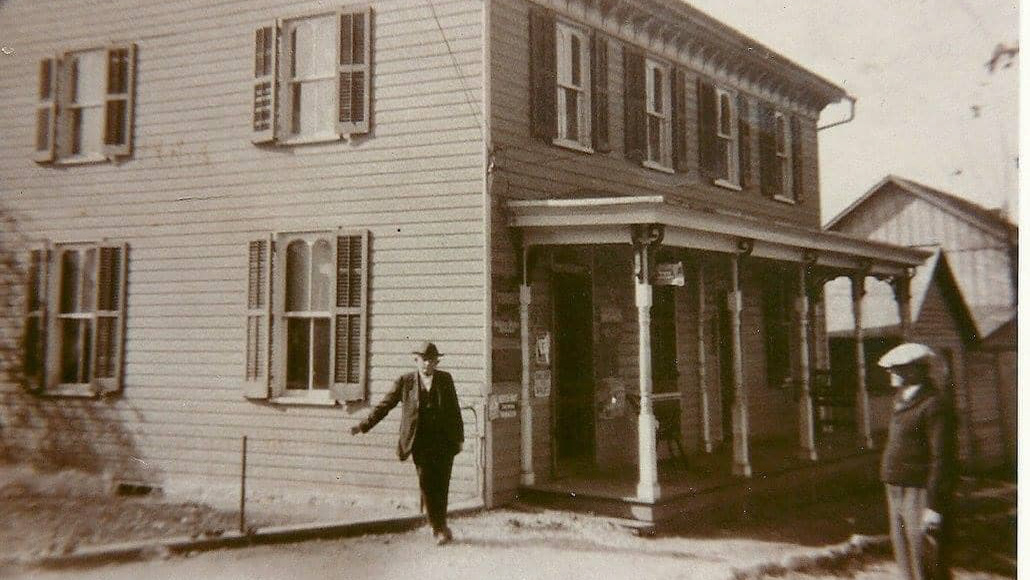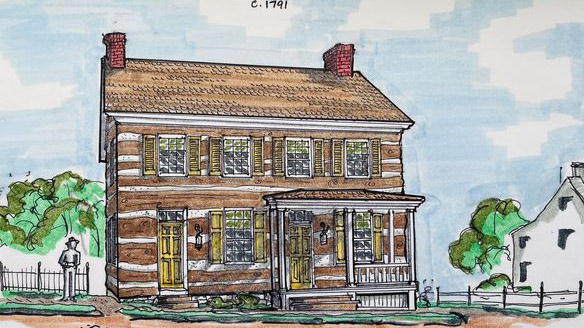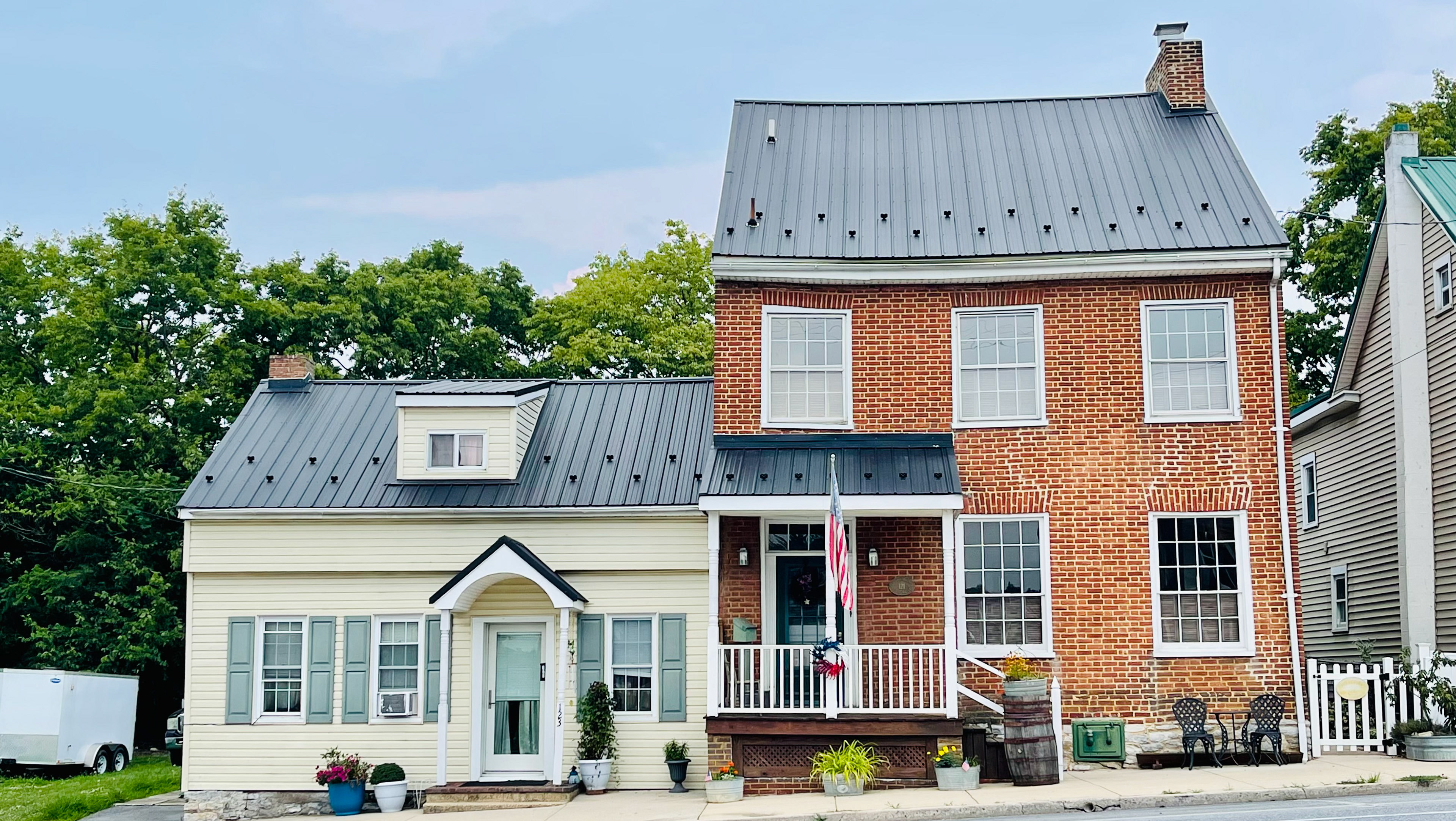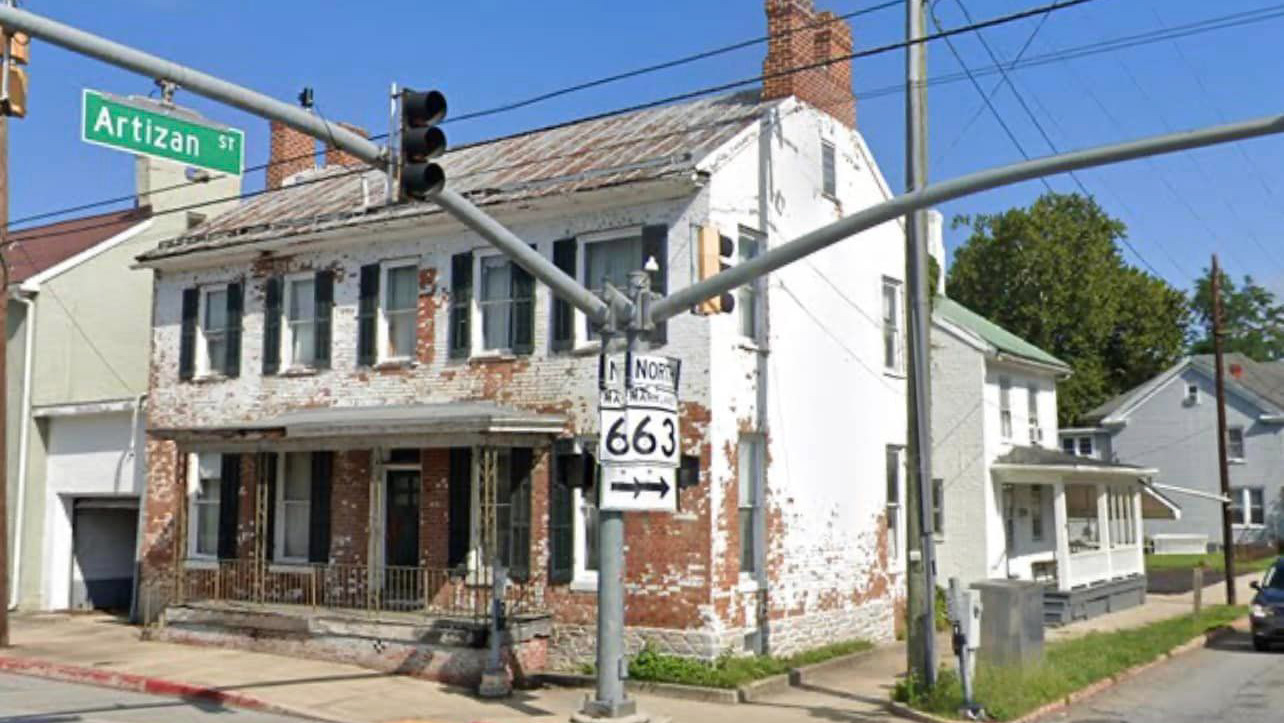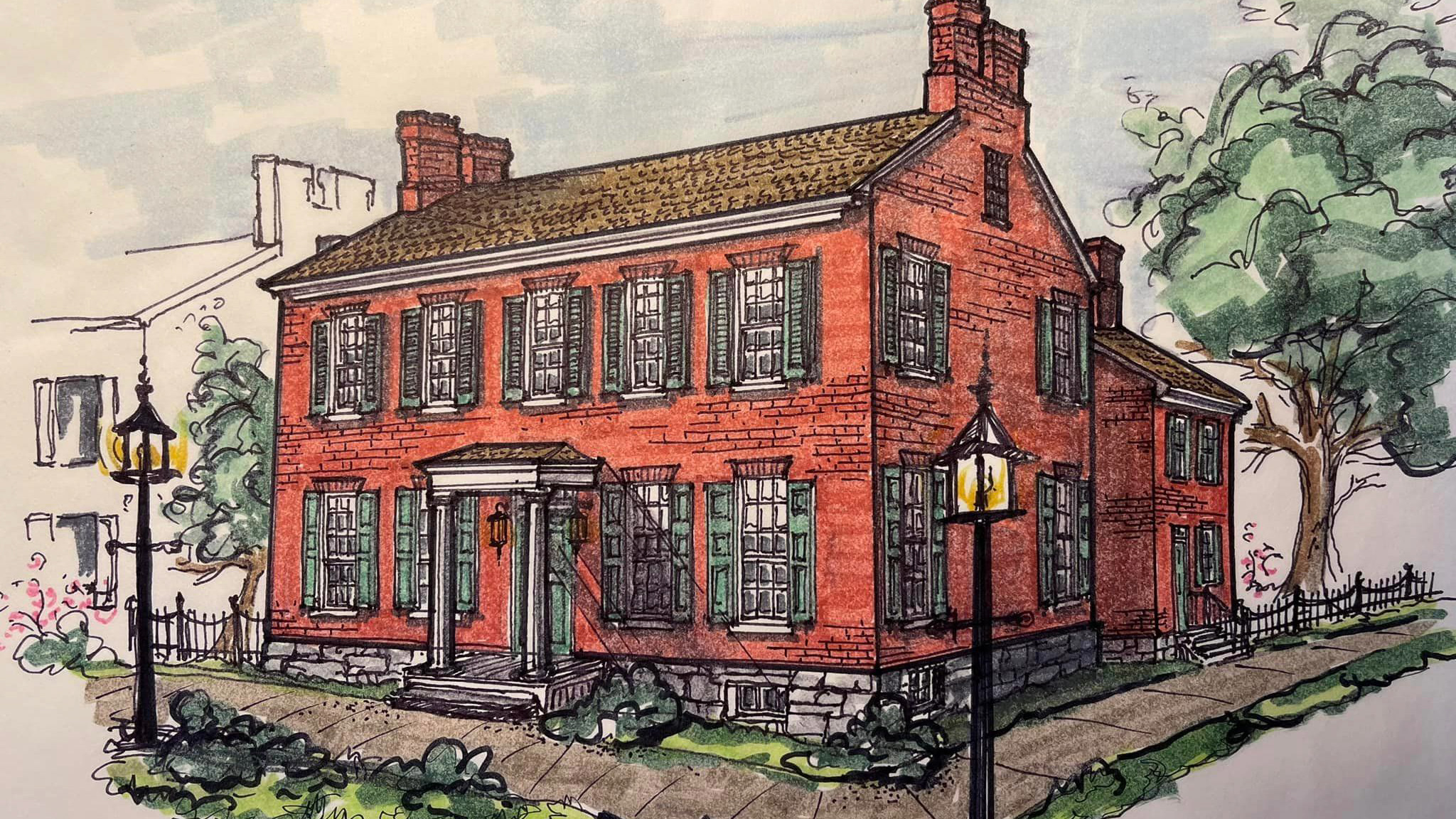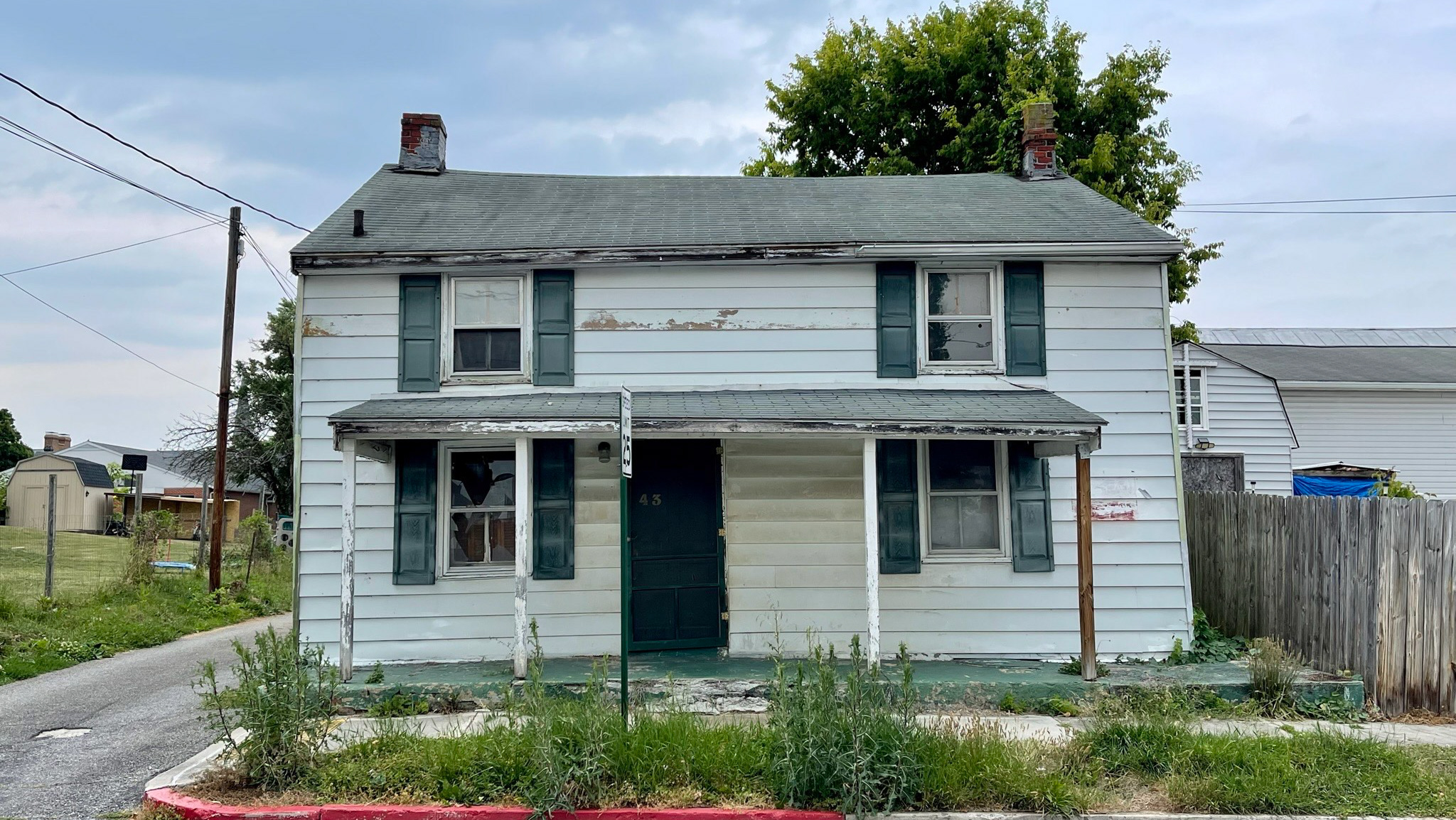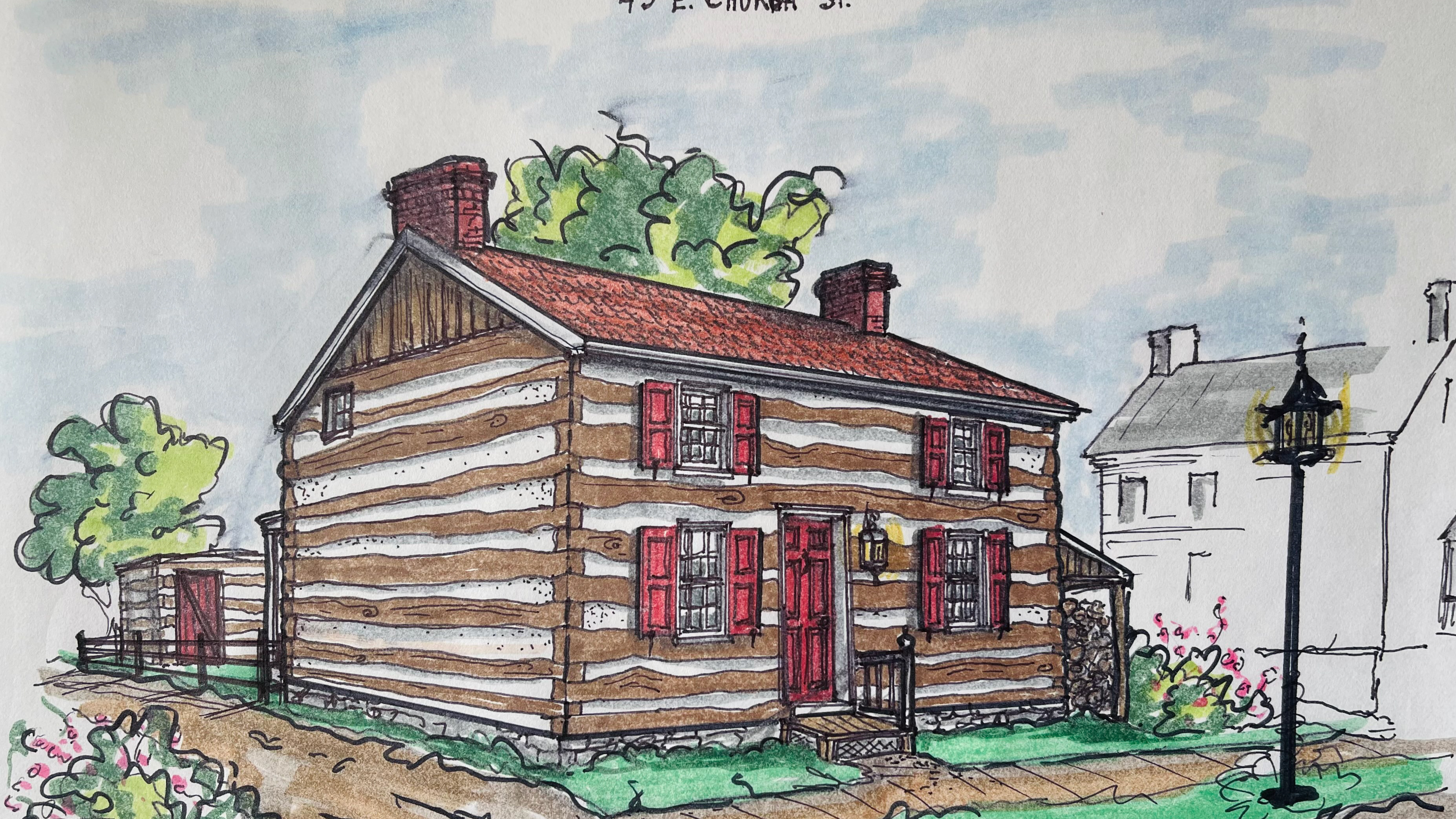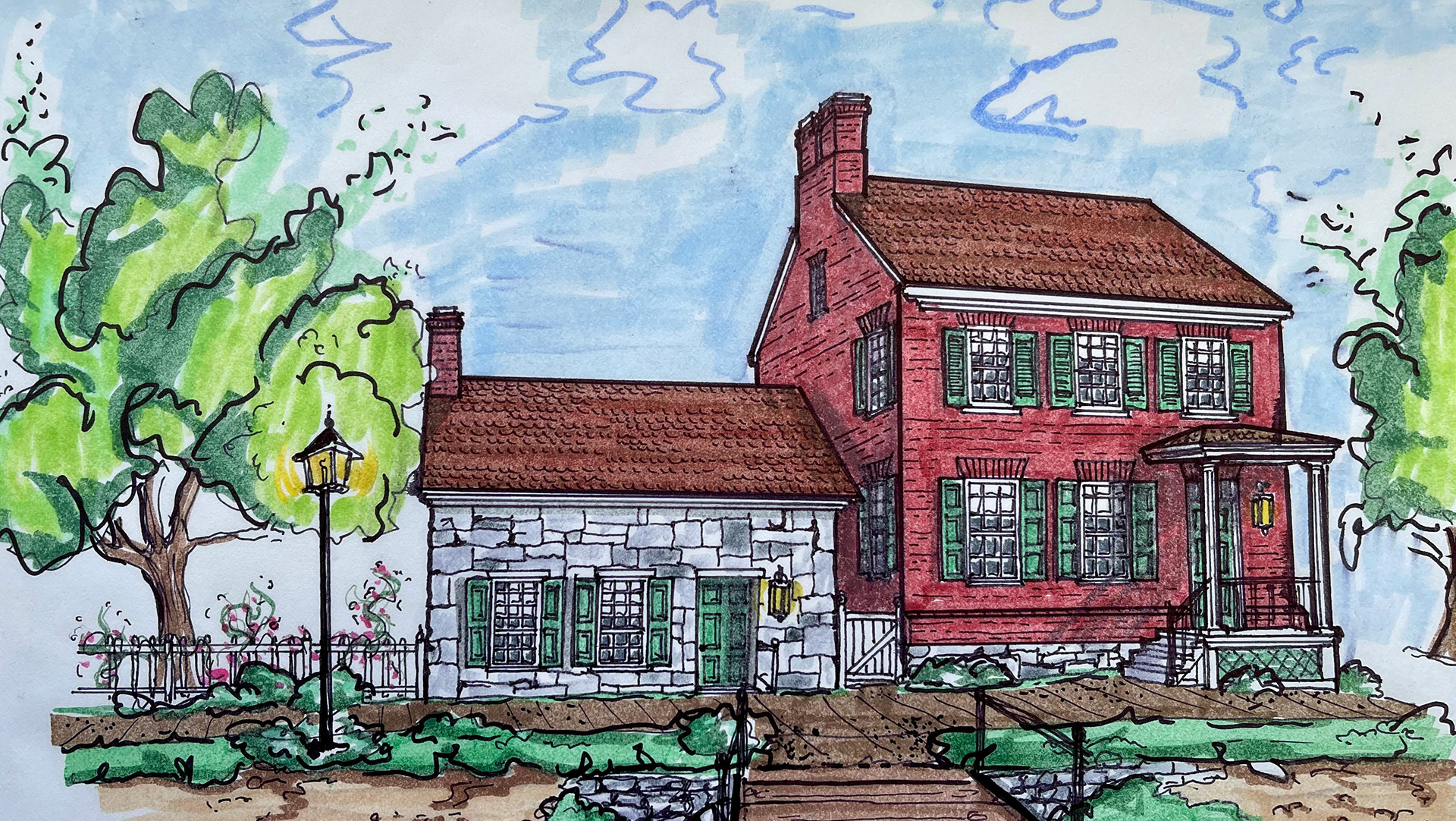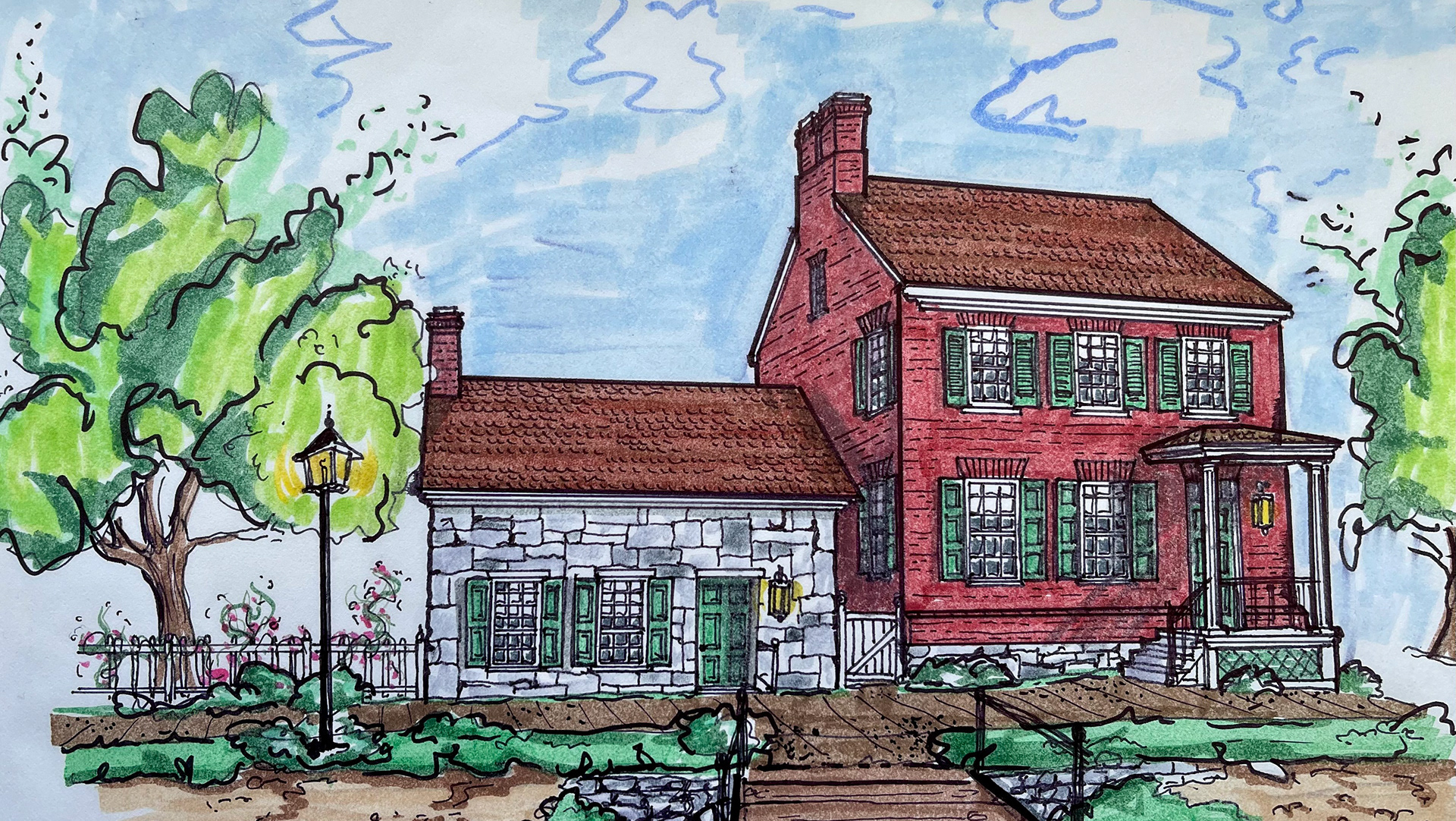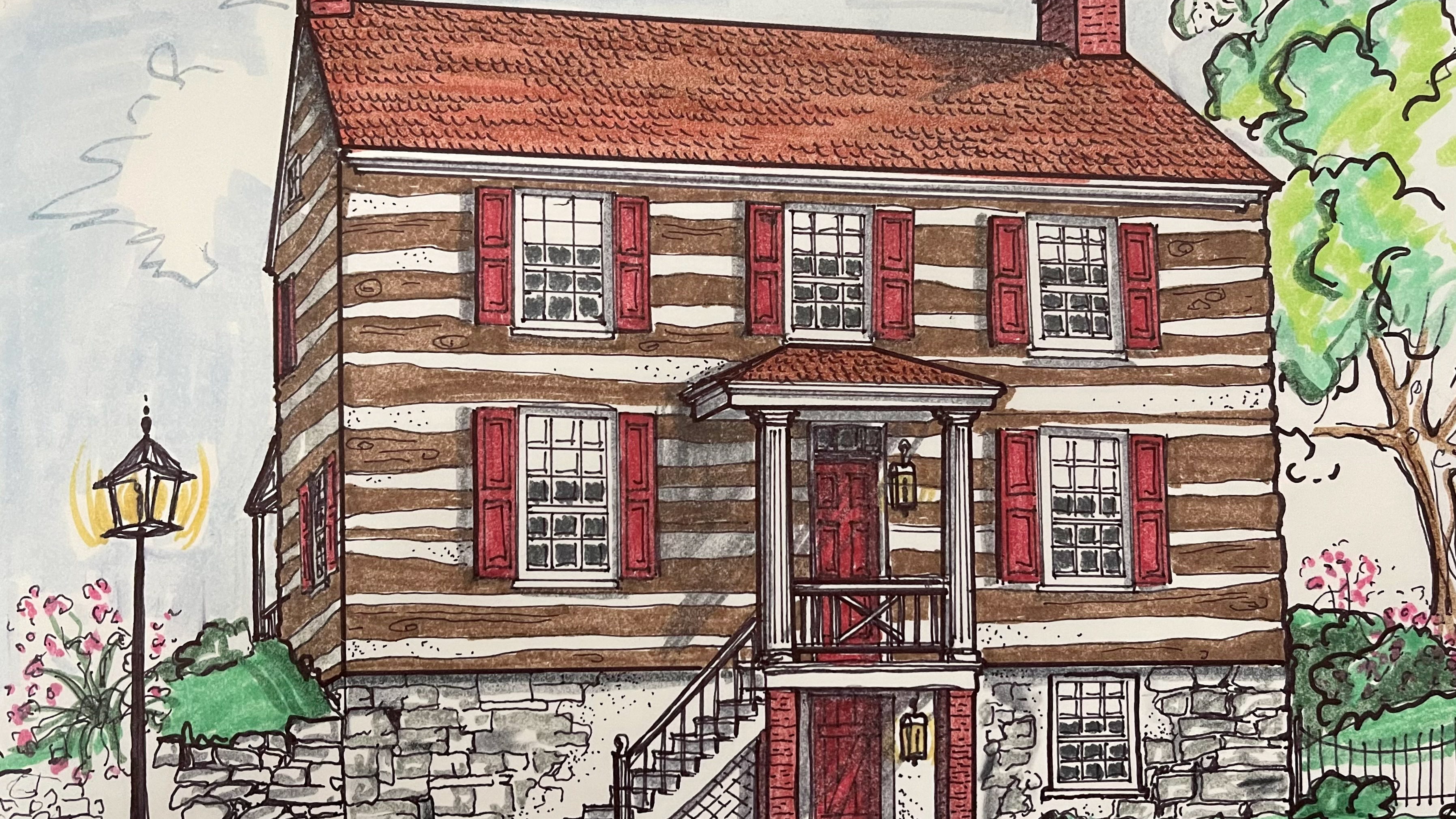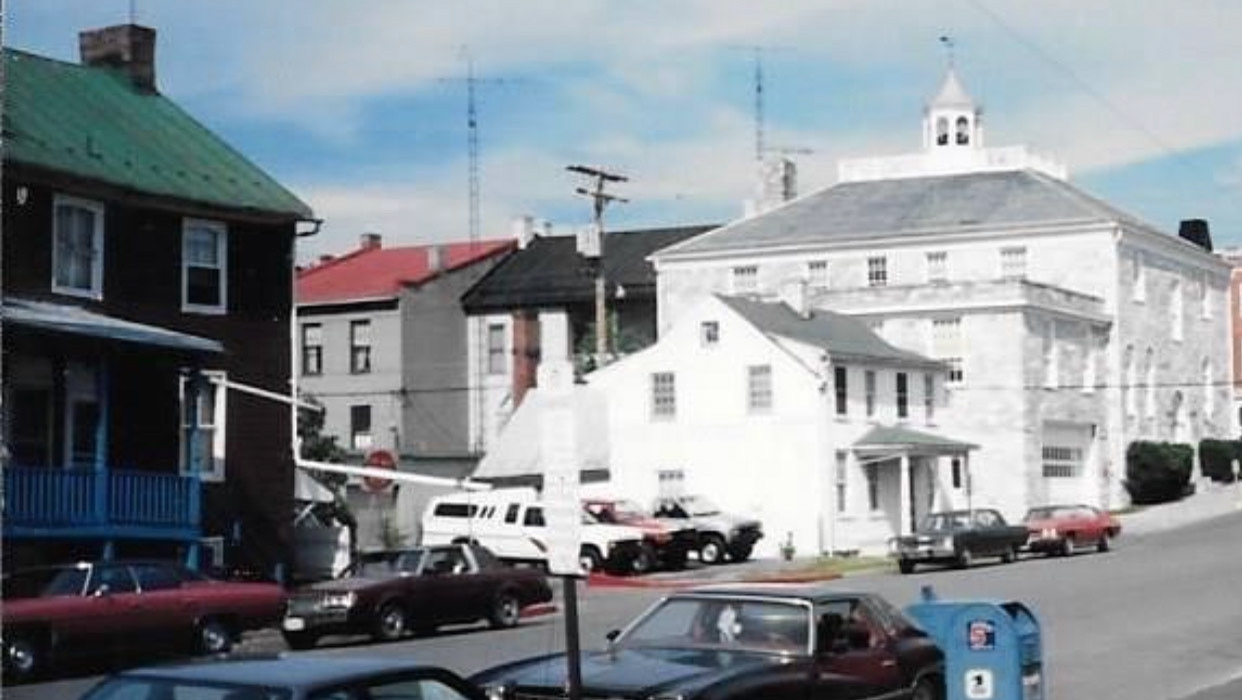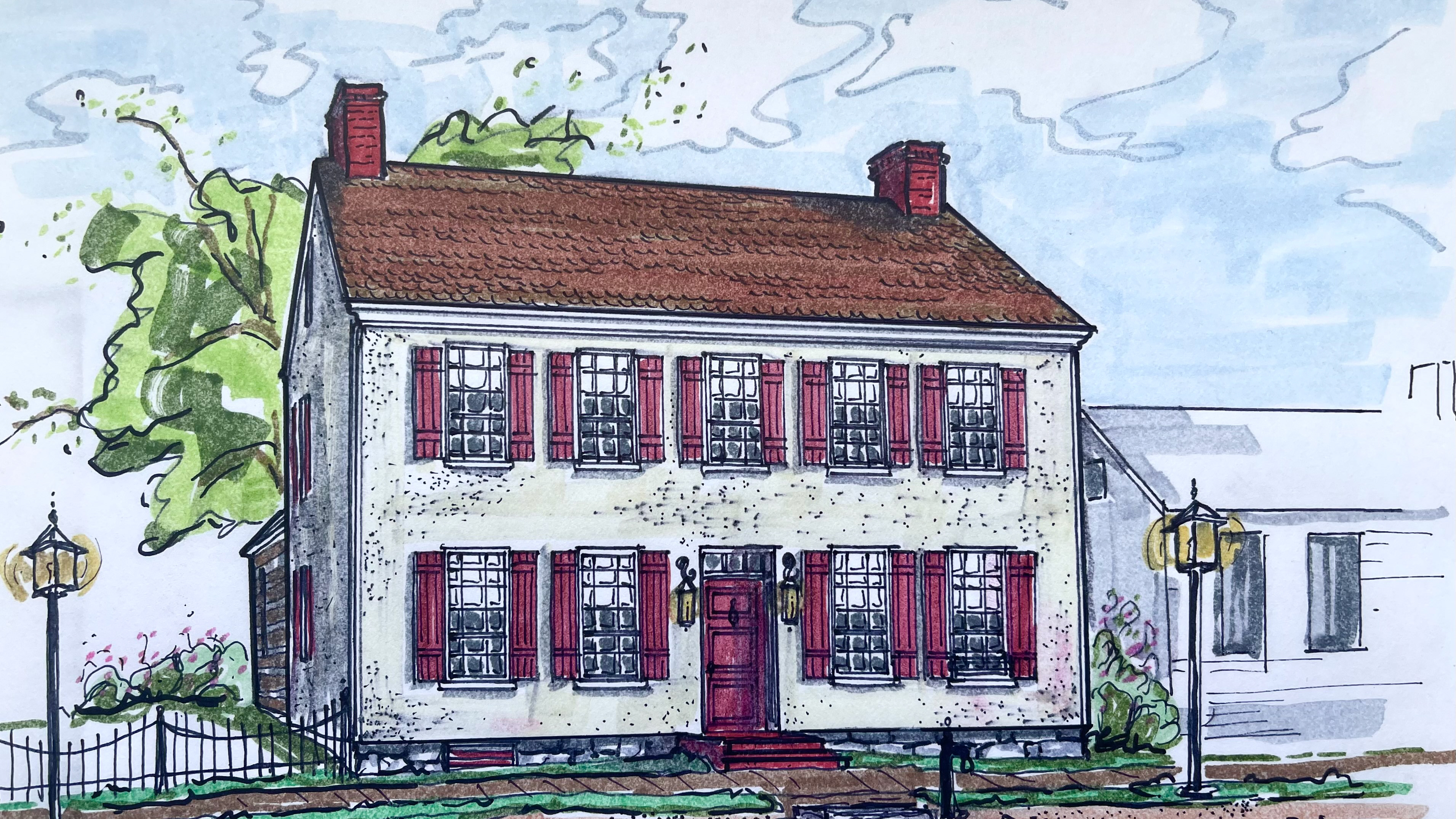A beautiful brick, Greek Revival style house sits on original lot 97 along the south side of East Salisbury Street in Williamsport. The property is flanked to the east by the alley and west by the old Rehoboth church. The lovely old residence was built in 1847 by Mr. Jacob Ardinger, a brick mason/laborer. Also on this property, until recently, an ancient log house stood directly on the alley for as long as anyone can remember.
The log house was also likely built by the Ardinger Family in the 1780s, specifically Christian Ardinger, one of Williamsport's founders. Surrounding the home are beautiful perennial gardens protected by a picket fence. A contemporary but respectful addition was built on the east wall of the home some decades ago, nearly doubling the size of the original house. The builders took great care to blend the new architecture with the old. The house is painted a soft cream with Taupe accents. Forest green awnings appear over the windows in the hotter months. The brick walls are laid in American, or Common Bond at all elevations, indicative of brick homes in Washington County built after 1840. Heavy wooden lintels crown the doors and windows with 6/6 original sashes. An unusual, period, horizontally paneled door with a transom leads to the front hall. The house's interior retains its beautiful old staircase, heart of pine random width floors, doors, trim, and mantlepieces.
The author conducted extensive research, but surprisingly, the first actual deed found on this lot was the transaction between Jacob Ardinger and Mary Williams and her husband, J. Campbell White, for $100 in May of 1847. This sale was simply a formal release from the Williams Family to Ardinger, giving him full ownership. The sale price of $100 was higher than most of the lot release sales, typically $50. The $100 sale price of lot 97 indicates that the lot was substantially improved and contained the log home, at least, and a privy, stable, good fence, etc. We should consider that the Ardinger's already had a lease on the lot, although we cannot procure proof now. Further research would help determine this.
There were two Jacob Ardinger's living in Williamsport at this time—one born in 1818 and one born in 1825. Very little is known about the two Jacob Ardingers other than they were both born in Williamsport; one worked as a mason, and the other a laborer. Which of these men and their families built the brick house is unclear. Both descended from the original settler and Revolutionary War Veteran, Jacob Christian Ardinger (1745-1807), buried in Riverview. In 1860, Jacob lost his lovely brick home on E. Salisbury, among other assets, in a lawsuit with Henry Zeller, to whom he owed a large debt. The 1860 deed references a one-story log house and a two-story brick house. In the years following the Civil War, Jacob still lives in Williamsport with his family.
The wealthy Corby Family purchased the home in 1862. The Corby family were prominent landowners in Hagerstown and Williamsport, owning property up and down Artizan and Potomac Streets. Maria Goodrich (nee' Corby) purchased the homes on April 27, 1864, for $1000 from the family. The Civil War raged in Washington County and the nation during this time. During the retreat from Gettysburg in July of 1863, the Confederate Army took the Church of the Brethren next door as a hospital, and a large fire was kept burning in the front lawn, likely for cleaning surgical instruments and bed linens. The home of Corby's neighbors, Adam and Suzanna Shoop (owners of the Banking Mansion), beside the church, was also used as a minor surgery. Surgeons and nurses amputated limbs, and in sad cases where soldiers passed, they stacked the dead against the Banking Mansion. Eventually, the corpses were buried in the back of these properties. Later, the soldiers were exhumed and moved to their final resting places. This house probably contributed during the Gettysburg retreat, but no information is known to prove that. The Corby's and their descendants, the Lindsay Family, lived in the home until 1951, when the property was purchased by Woodrow (1914-1983) and Janet (1920-2009) Grove.
Woodrow and Janet raised their family in the old home. The Grove family had a funeral business in both Hancock and Williamsport and owned the South End Development Company that developed most of Williamsport south of Frederick Street. In the 1970s, The Groves built a significant, beautiful addition on the east side of the house, nearly doubling its size. The addition accommodated a large, modern kitchen, dining room, and extra bedrooms. Janet Grove was known for her incredible cooking; many a good meal was had in that house, to be sure. Sadly, in the late 1990s, the old log structure, which held great memories for the Grove Family, was lost due to time and wood pests.
After Mrs. Grove passed away in 2009, the estate sold the home to Grove cousin JoAnn Grove Miller and her husband Clyde "Pat" Miller, Jr. The house has been in the Grove Family for over 72 years. Pat Miller was born October 7, 1932, in Williamsport, across from Steffey Wharf. Steffey Wharf sat where the parking lot across the canal from the Lockhouse at Lock 44 is. JoAnn Grove Miller was born in Williamsport and grew up on Church Street. Both Pat and JoAnn attended Williamsport High School. For more than 30 years, JoAnn worked as a medical assistant to Dr. Byrkit here in Williamsport. Pat joined the Army after graduating from Williamsport in 1951. He fought at the Battles of Old Baldy and Pork Chop Hill, where he was wounded, for which he received a Purple Heart. Clyde "Pat" and JoAnn were married in 1955. Pat worked at the Byron Tannery for the first five years of their marriage. However, Pat attended Shepherd College, receiving his BA and then his master's in education from Oregon State. Pat took a job with the Washington County Board of Education, where he worked for 30 years, retiring in 1990. Pat and JoAnn had one daughter and two sons.
Pat and JoAnn loved to garden and restore old homes together (they restored several), including the Hogg House (c.1790), which was tragically lost for a parking lot after they sold it, much to their dismay. One of Pat's greatest passions was his love of his town's history. Pat spent endless hours interviewing "old timers" in Williamsport in the 1960s-1990s. The information he gathered would have been lost to time but for his efforts. During the bicentennial in 1976, Pat was instrumental in creating the now-famous map showing the early buildings. Pat also gave back to Williamsport by serving on the town council. JoAnn and Pat carried on the tradition of restoration, gardening, and beautification that her Grove relatives did in retirement at the historic East Salisbury Street home. Pat passed away in April of this year, leaving an incredible legacy to the history of his beloved town. JoAnn and their daughter, Sali Jo Miller, continue to enjoy the beautiful old residence surrounded by lovely family antiques and warm memories. The Miller's have gifted their love of history, preservation, and beautification to their community for seven decades; for that, Williamsport thanks them. Good neighbors create good communities. Williamsport's heritage in Stone, brick, and wood deserves protection and respect, and as a community, we should demand it.

